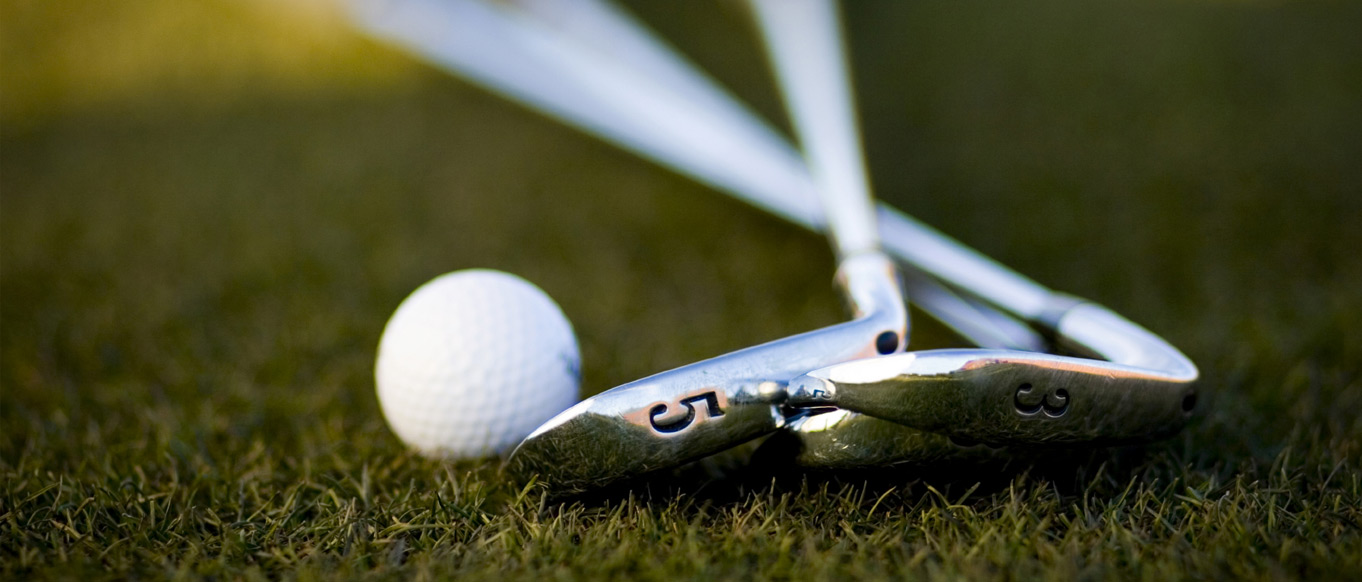

If you remember from Part 1, I interviewed Don and we are discussing custom fit golf clubs and the intricacies of fitting and building them. This series is meant to give you some insight of a builder and to educate golfers about what they can learn from a custom golf club fit and build.
Q: Don, a few questions came up in my mind after our last discussion. I am curious, is there more than one method to fit a golfer? We have been in a lot of golf shops and on many ranges, so how many are there?
A: There are hundreds, believe it or not. I am glad you are asking these questions because it is important for golfers to have some educated and realistic expectations when they show up for a fitting. It also depends a lot on the person doing the fitting and the method used. There are many different philosophies out there. You should make sure you understand exactly what the fitter is saying before you proceed with the fitting and purchase of golf clubs.
Q: How many visits are required and are any return visits needed?
A: As many as it takes for you to understand and be comfortable with the new equipment. And, yes, everyone should have a club person that they trust so they can get occasional maintenance done on the clubs.
Q: We know that grips need changing periodically, how often should they be changed?
A: About every 75 rounds or every year, whichever comes first. Depending also on how much you practice, will affect the wear of the grip. How clean you keep your grips and how you clean them affects grip life.

Q: Now with the grips, let’s talk a bit about building the club beginning with the grip. Can you help us out with grip sizes, styles, materials, and correct fit of the grip itself?
A: Well, that’s such an in depth subject, and personal to every golfer. Size is most important, then feel. Styles play a role, and comfort in YOUR hand. Try as many as you can; cord, wrap grip, crossline, with varying degrees of tacky – they will all feel different, but you will find one that is comfortable for you; give you a feeling of confidence. As far as fit is concerned, this is best done with a fitter you have confidence in. Why don’t you explain what your experience was.
Shebylo: Well, OK, the thing I realized with you is not how much I learned; it is how much I didn’t know!! First of all, the reason size of the grip is important has got to do with how effectively the golfer rotates through the ball hitting area. Your swing is optimized by the effectiveness of how well you are connected to the club. The primary point of contact is the grip, so that measurement is very important. The fitter would suggest a grip size and also the number of wraps required (if needed). The feel and style you choose should conform to that suggestion. Remember mine was the tour velvet Golf Pride, 1 1/2 wraps, then later I added the rib to the grip which helped me keep in mind the position of the club face, and increased my confidence. And I think confidence is probably most important.
Q: Even though a golfer chooses a particular grip, do you keep the same wrap (s) length and number all the way through the set from driver to scoring clubs?
A: No. The wraps will vary in length and, maybe number, depending on the data collected during the fitting. All I am going to tell you here is that it varies in accordance with ball flight.
Thanks Don.
So with all the grips on the market these days, I hope that these few words will guide you the next time you are looking around for grips. I bet you never look at a grip the same way again, but I know you can handle it.





 The Fitting Studio is a custom golf club fitting and building business located in Long Beach, CA. Partnered with The Fitting Studio is former professional golfer and UCLA All-American, Travis Matthew Johnson. Travis, who also founded the Travis Mathew Apparel brand, recently sold his interest in TM to pursue more business endeavors within the fashion world as well as the golf industry. For more information about The Fitting Studio, visit
The Fitting Studio is a custom golf club fitting and building business located in Long Beach, CA. Partnered with The Fitting Studio is former professional golfer and UCLA All-American, Travis Matthew Johnson. Travis, who also founded the Travis Mathew Apparel brand, recently sold his interest in TM to pursue more business endeavors within the fashion world as well as the golf industry. For more information about The Fitting Studio, visit  On rare occasions, a true high-end shaft will be offered stock in golf clubs, but consumers generally won’t know one way or the other. The paint scheme on the stock shaft will be different, but the construction of the shaft may in fact be the real deal. Again, this is the rare exception to the rule and you’ll need to consult with your local club fitter to get the straight scoop.
On rare occasions, a true high-end shaft will be offered stock in golf clubs, but consumers generally won’t know one way or the other. The paint scheme on the stock shaft will be different, but the construction of the shaft may in fact be the real deal. Again, this is the rare exception to the rule and you’ll need to consult with your local club fitter to get the straight scoop. The Fitting Studio is a custom golf club fitting and building business located in Long Beach, CA. Partnered with The Fitting Studio is former professional golfer and UCLA All-American, Travis Matthew Johnson. Travis, who also founded the Travis Mathew Apparel brand, recently sold his interest in TM to pursue more business endeavors within the fashion world as well as the golf industry. For more information about The Fitting Studio, visit
The Fitting Studio is a custom golf club fitting and building business located in Long Beach, CA. Partnered with The Fitting Studio is former professional golfer and UCLA All-American, Travis Matthew Johnson. Travis, who also founded the Travis Mathew Apparel brand, recently sold his interest in TM to pursue more business endeavors within the fashion world as well as the golf industry. For more information about The Fitting Studio, visit 










